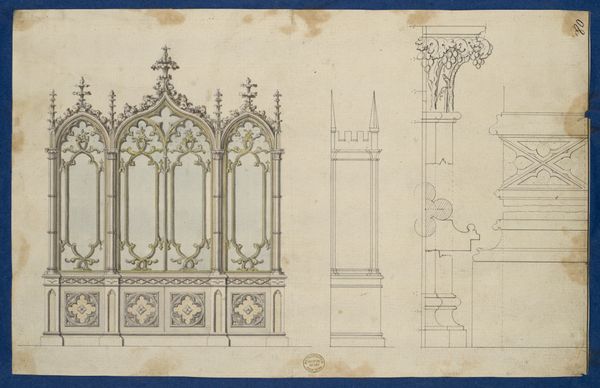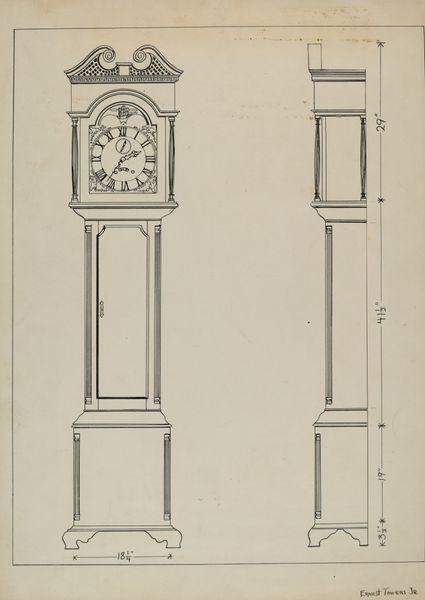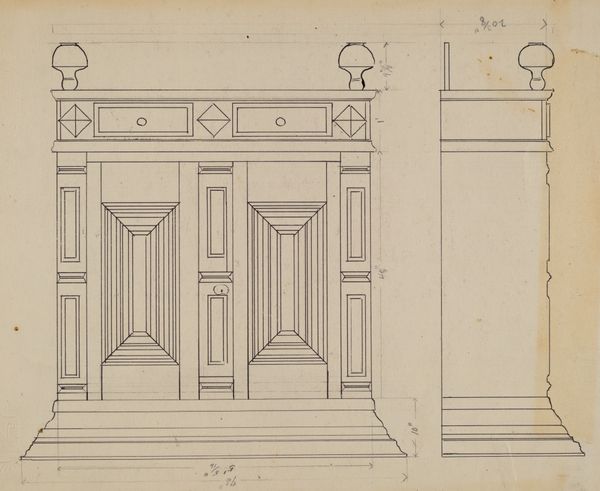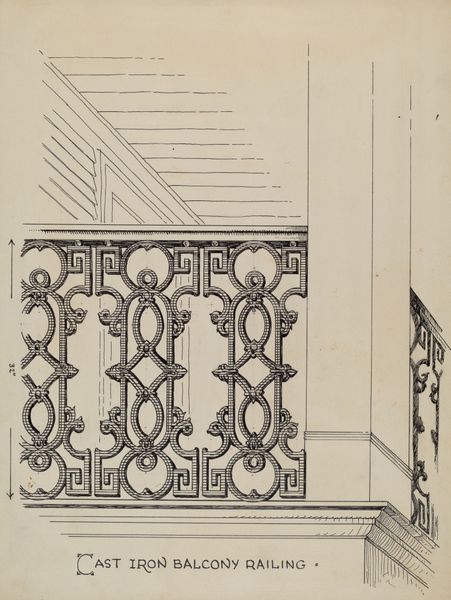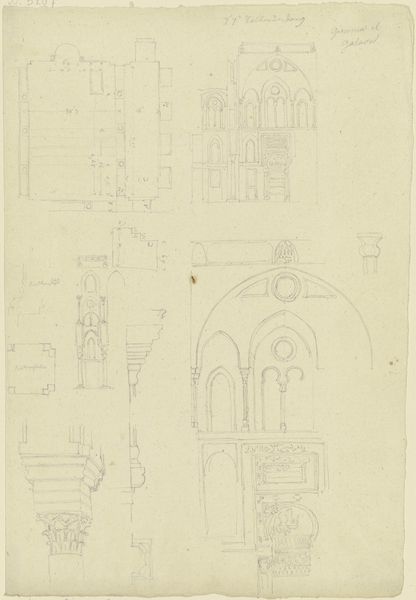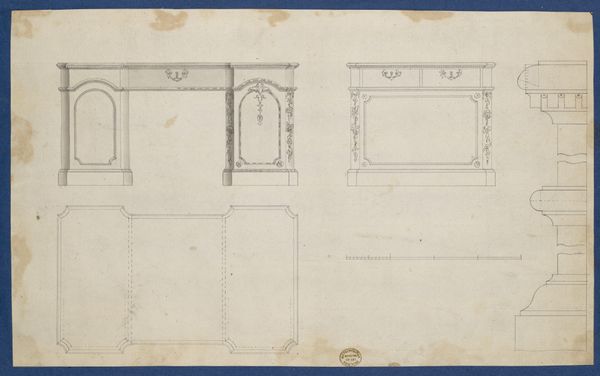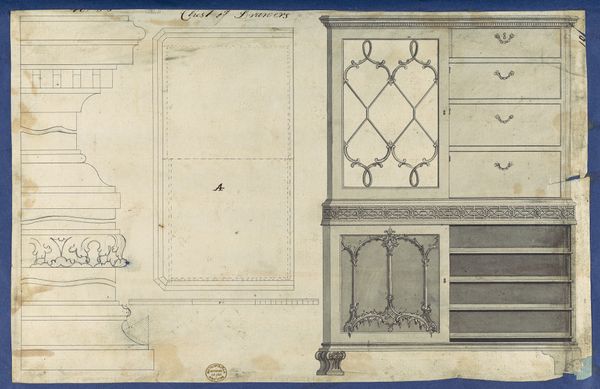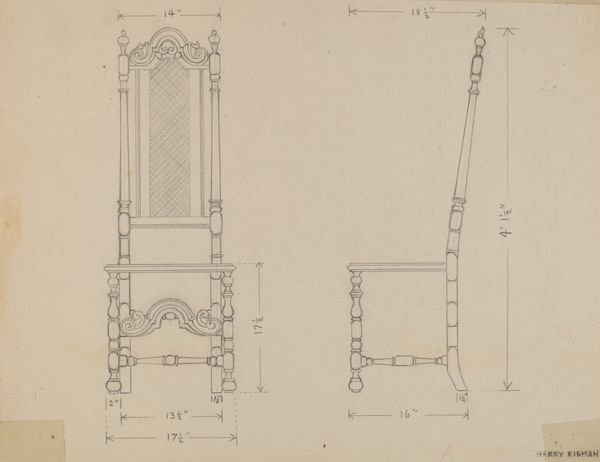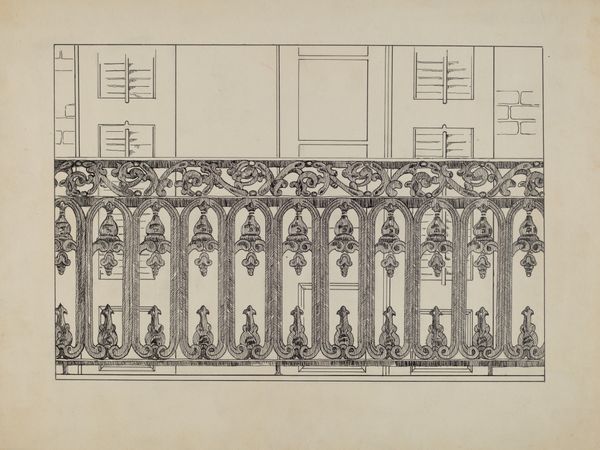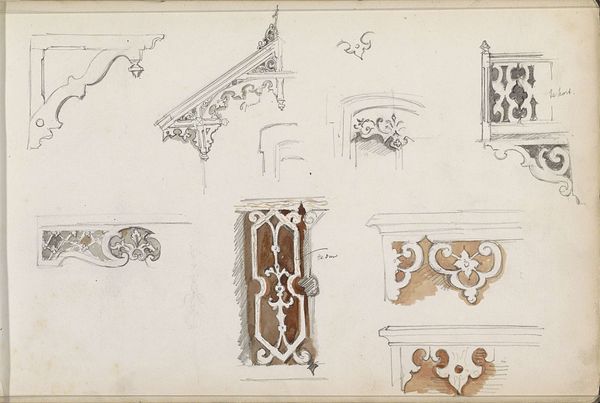
drawing, paper, pencil, architecture
#
drawing
#
paper
#
geometric
#
pencil
#
architecture
Dimensions: overall: 27.4 x 22.2 cm (10 13/16 x 8 3/4 in.) Original IAD Object: 101"x42"x23"
Copyright: National Gallery of Art: CC0 1.0
Curator: Looking at this pencil drawing on paper, titled "Cabinet-top Desk," created around 1937 by Rolland Livingstone, the immediate sensation is one of meticulous planning and formal elegance. Editor: My first impression is that this piece embodies both precision and aspiration. There is something stoic about it. A drawing like this presents not just a design, but also a desire to elevate function into an object of enduring value. How do you view its purpose? Curator: Its purpose transcends mere functionality; it's a testament to enduring style within the realm of furniture design. These classical figures placed atop resonate deeply. In earlier eras, those kinds of human representations would indicate ideals, values the patrons or the owners hoped to align with. Editor: The presence of the statuettes, or perhaps they're meant as lamps, does signal status, absolutely. This suggests this design catered to a particular class and set of aesthetic values, doesn’t it? Also, these drawings can become historical objects in their own right, even when they were never transformed into furniture. Curator: Precisely, such designs serve as windows into the stylistic preferences and social hierarchies of their time. I keep returning to that choice of the statues as emblems on this cabinet - these would become silent yet ever-present, daily reminders. Editor: So, this work reflects a moment when domestic life was deliberately orchestrated, curated for meaning, really. Do you see a dialogue between the design and the period it was conceived in? The late 1930s were turbulent times, globally. Curator: Certainly. Even amid global turbulence, the aspiration for stability, order, and beauty found expression in the design of everyday objects. The rigid geometry layered into its form reminds the viewer about ideals around discipline, hierarchy, reason - these have always had such an enduring appeal across cultures in spite of all odds. Editor: The very act of creating such detailed drawings represents a yearning for control and structure. Perhaps the artist found this endeavor personally therapeutic. Ultimately, it embodies the symbolic weight furniture and the domestic sphere held during the late 1930s. Curator: Agreed; considering the era's context elevates our appreciation of it far beyond seeing the piece solely as just functional design. The statuettes alone serve as cultural capsules. Editor: For me, considering this design provokes reflection on the role domestic spaces play in reflecting aspirations during the eras from which they arose. What endures and what fades away with passing fashions?
Comments
No comments
Be the first to comment and join the conversation on the ultimate creative platform.
